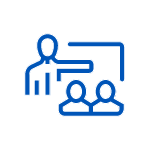2-day instructor-led training course
Certification following Instructor registering attendee with the Scrum Alliance
After-course instructor coaching benefit
Learning Tree end-of-course exam included
Get the Advantage 37 295 kr
- Take this course and gain unlimited access to more than 300 virtual instructor-led courses
- Future-proof your career with more than 100 sought-after certifications in the market
- Build real skills through hands-on learning in more than 180 virtual labs
- Grow your skills and capabilities with more than one course at a time and save
Thank you for choosing subscriptions!
-
aug 7 - 8 9:30 - 18:00 CESTVirtualInstructor: Colin Bird
-
aug 7 - 8 9:30 - 18:00 CESTVirtualInstructor:
-
aug 18 - 19 14:30 - 23:00 CESTVirtualInstructor: Samir Chhibber
-
sep 17 - 18 14:30 - 23:00 CESTVirtualInstructor: Samir Chhibber
-
nov 17 - 18 14:30 - 23:00 CETVirtualInstructor: Samir Chhibber
-
dec 8 - 9 14:30 - 23:00 CETVirtualInstructor: Samir Chhibber
-
dec 11 - 12 9:30 - 18:00 CETVirtualInstructor:
-
dec 11 - 12 9:30 - 18:00 CETVirtualInstructor: Colin Bird
-
feb 23 - 24 14:30 - 23:00 CETVirtualInstructor: Samir Chhibber
-
mar 18 - 19 13:30 - 22:00 CETVirtualInstructor: Samir Chhibber
Scroll to view additional course dates




